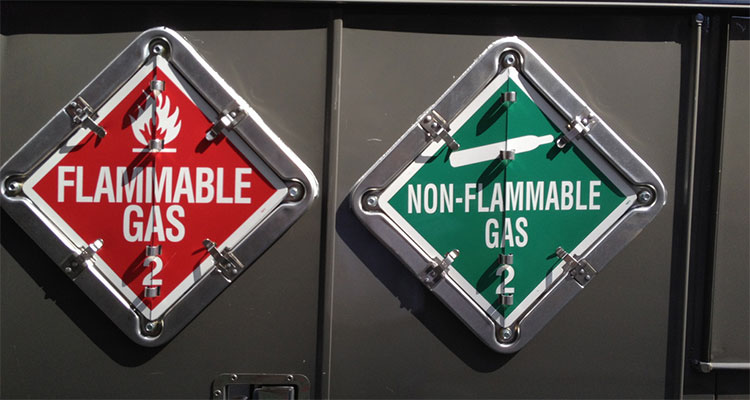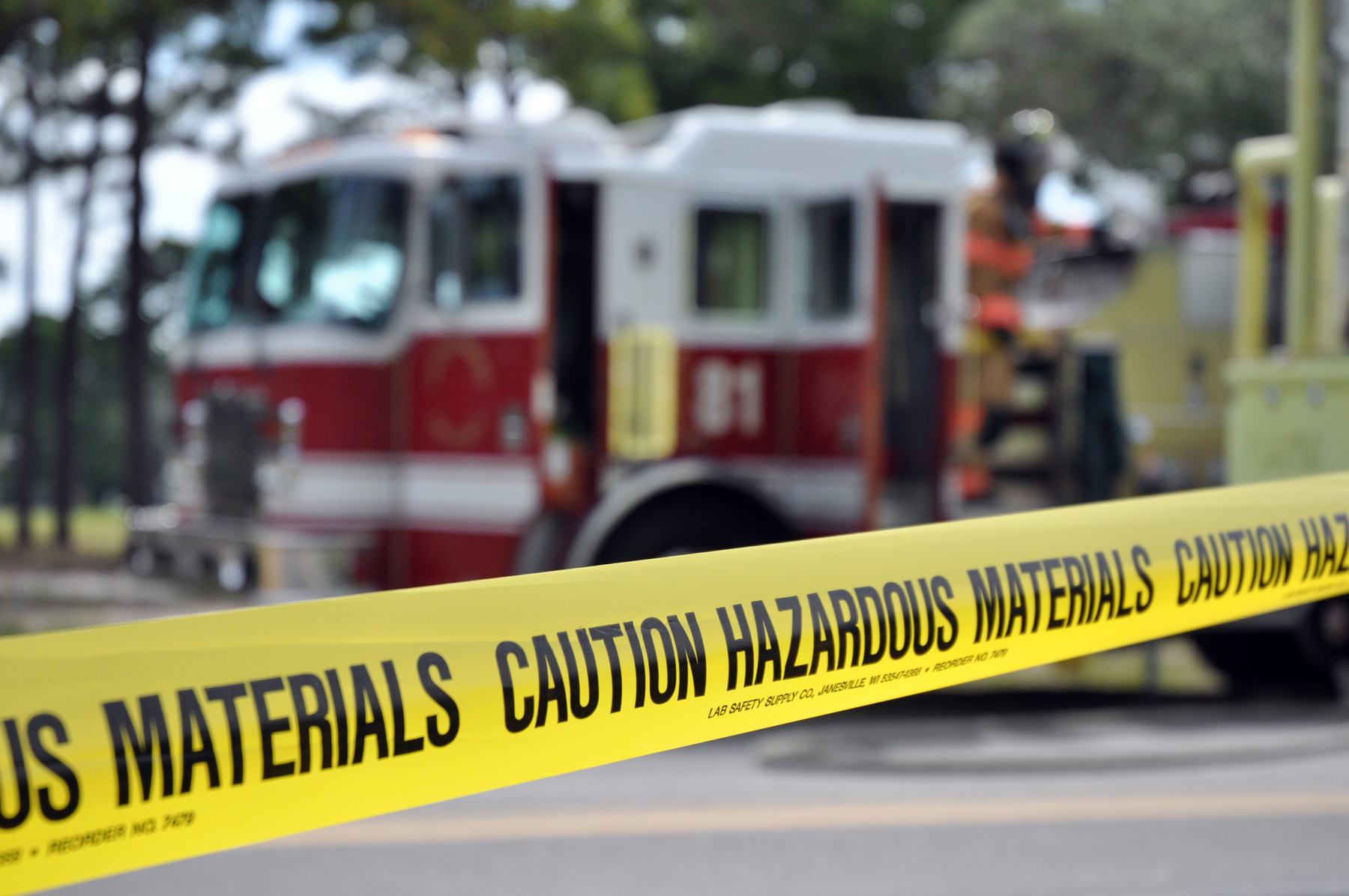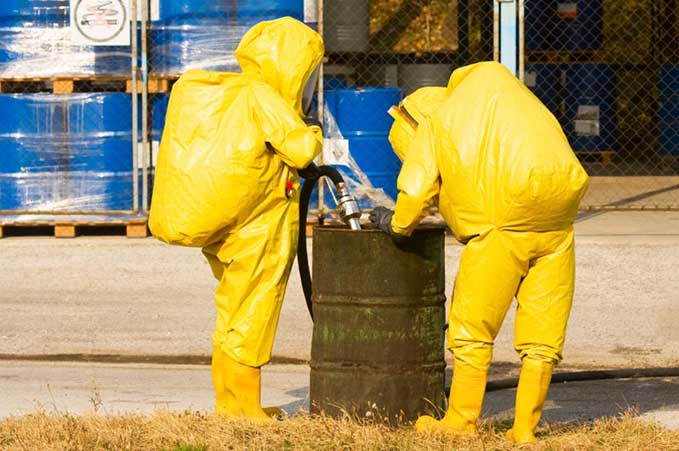Since the final deadline for implementing the 2012 HazCom/GHS updates, OSHA has been citing companies for hazard communication noncompliance at a substantial rate. In fact, HazCom was the 2nd most cited violation in 2016. Aligning with GHS has created confusion and noncompliance issues because of downstream delivery issues.

For two years in a row, the Hazard Communication Standard (HazCom) 1910.1200 is the second most cited violation on OSHA’s Top 10 list. The sections within the HazCom standard most often violated include implementation of a HazCom program and training, followed by the requirement to maintain Safety Data Sheets.
To resolve this problem, it is recommended that employees receive Annual Refresher Safety Training to include Hazard Communication/GHS. All of our courses comply with OSHA regulations. Receive your certification with our 24- or 40-hour course, or renew your HAZWOPER certification with our 8-hour refresher.
- The OSHA HAZWOPER Standard (29 CFR Part 1910.120) – requires that all workers that are exposed to or handle hazardous materials must take a 24hr or 40hr HAZWOPER Training Course and an 8hr Annual Refresher.
- 8hr Refresher: $40 / 24-hour: $155 / 40-hour: $255
- Enter Promo Code "train10off" at Checkout
Best Practice Steps to HazCom Compliance
Learn the best practices of compliance with OSHA’s Hazard Communication (HazCom) standard by following following simple steps to ensure your success.
- Inventory all your chemicals
- Get your documents and compile your database
- Create GHS compliant labels
- Due diligence reporting
- Train your employees

What is HAZWOPER?
Hazardous Waste Operations and Emergency Response (HAZWOPER) is a set of guidelines produced and maintained by the Occupational Safety and Health Administration which regulates hazardous waste operations and emergency services in the United States and its territories. With these guidelines, the U.S. government regulates hazardous wastes and dangerous goods from inception to disposal.
The HAZWOPER standard provides employers, emergency response workers, and other workers potentially exposed to hazardous substances information and training criteria to improve workplace safety and health and reduce workplace injuries and illnesses that could occur from exposures to hazardous substances.
Hazardous waste, as defined by the standard, is a waste (or combination of wastes) according to 40 CFR §261.3 or substances defined as hazardous wastes in 49 CFR §171.8.

Mandatory Required Training
The OSHA HAZWOPER Standard (29 CFR Part 1910.120) – requires that all workers that are exposed to or handle hazardous materials:
- Are required take a 24 hour or 40 hour HAZWOPER Training Course – and an 8hr Annual Refresher Course;
- At a level required by their job function and responsibility – and before they are permitted to engage in hazardous waste operations that could expose them to hazardous substances.
Three Levels of HAZWOPER Training
The HAZWOPER regulations contain 3 levels of training for personnel.
- Emergency Response – 29 CFR 1910.120 (q);
- General Site Cleanup – 29 CFR 1910.120 (e); and
- Resource Conservation Recovery Act (RCRA) Treatment, Storage and Disposal Facilities (TSDF) – 29 CFR 1910.120 (p).

Five HAZWOPER Operation Types
The standard describes five operations that fall within the regulation’s scope with three training-types that have unique learning objectives and varying training-hours requirements.
HAZWOPER applies to five groups of employers and their employees. This includes employees who are exposed (or potentially exposed) to hazardous substances (including hazardous waste) and who are engaged in one of the following operations as specified by OSHA 1910.120(a)(1)(i-v) and 1926.65(a)(1)(i-v):
- Cleanup operations required by a governmental body (federal, state, local or other) involving hazardous substances conducted at uncontrolled hazardous-waste sites.
- Corrective actions involving clean-up operations at sites covered by the Resource Conservation and Recovery Act of 1976 (RCRA) as amended (42 U.S.C. 6901 et seq.).
- Voluntary cleanup operations at sites recognized by a federal, state, local, or other governmental body as uncontrolled hazardous-waste sites.
- Operations involving hazardous waste which are conducted at treatment, storage and disposal (TSD) facilities regulated by Title 40 of the Code of Federal Regulations, parts 264 and 265 pursuant to the RCRA, or by agencies under agreement with the U.S. Environmental Protection Agency to implement RCRA regulations.
- Emergency response operations for releases of, or substantial threats of release of, hazardous substances (regardless of the hazard’s location).
The most commonly used manual for HAZWOPER activities is Department of Health and Human Services Publication 85–115, Occupational Safety and Health Guidance Manual for Hazardous Waste Site Activities. Written for government contractors and first responders, the manual lists safety requirements for cleanups and emergency-response operations.
